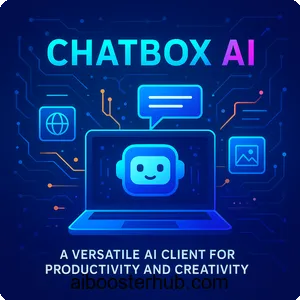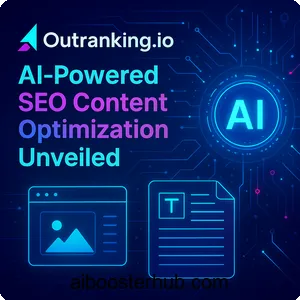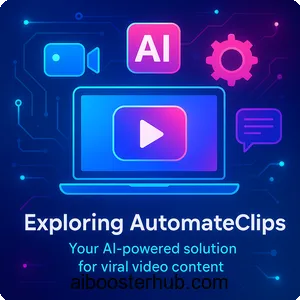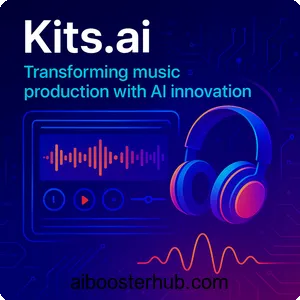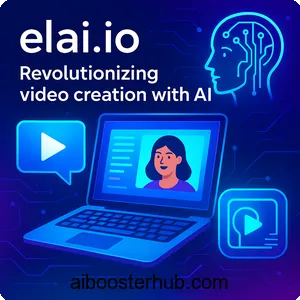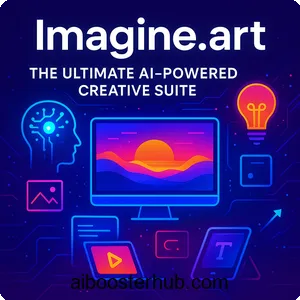Deep AI Free: Comprehensive Review & Alternative Tools
The world of artificial intelligence (AI) is evolving rapidly, and tools like Deep AI Free have become game-changers for creators, developers, and businesses. With its suite of generative AI capabilities, Deep AI Free offers users the ability to explore creative and technical tasks without financial barriers. This article provides an in-depth review of Deep AI Free, explores its features, limitations, and compares it with other generative AI free tools. Whether you’re a beginner or a seasoned AI enthusiast, this guide will help you navigate the landscape of free AI deep tools and find the best fit for your needs.
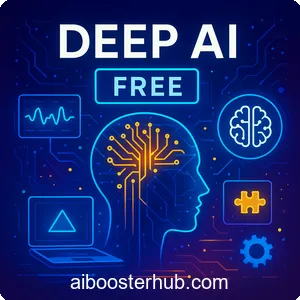
Content
Toggle1. What is Deep AI Free?
Deep AI Free is a web-based platform that provides access to a variety of AI-powered tools designed for tasks like image generation, text creation, and more. It leverages generative AI to produce high-quality outputs, making it a popular choice for users seeking free AI deep solutions. The platform is user-friendly, requiring no advanced technical knowledge, which makes it accessible to a wide audience, from hobbyists to professionals.
The core appeal of Deep AI Free lies in its no-cost model, allowing users to experiment with AI without upfront investment. It supports tasks such as generating artwork, enhancing images, and creating text-based content. However, while the free version is robust, it comes with limitations that may affect users with high-volume needs or those requiring advanced features.
Key features of Deep AI Free
Deep AI Free offers a range of tools that cater to creative and technical applications. Some standout features include:
- Image generation: Create unique images from text prompts using generative AI algorithms.
- Text-to-image conversion: Transform written descriptions into detailed visuals.
- Image enhancement: Improve the quality of low-resolution images.
- Text generation: Produce creative or informative text for various purposes.
- User-friendly interface: Designed for ease of use, even for those new to AI.
These features make Deep AI Free a versatile platform for users exploring generative AI free tools. The platform’s accessibility and diverse offerings position it as a strong contender in the free AI space.
Who is Deep AI Free for?
Deep AI Free is ideal for individuals and small teams looking to experiment with AI without committing to paid subscriptions. It suits:
- Content creators needing visuals or text for blogs, social media, or marketing.
- Developers testing AI integrations for small-scale projects.
- Students and educators exploring AI concepts in academic settings.
- Hobbyists interested in creative AI applications like art or storytelling.
However, users with advanced requirements, such as bulk processing or commercial-grade outputs, may find the free version limiting.
2. How Deep AI Free works
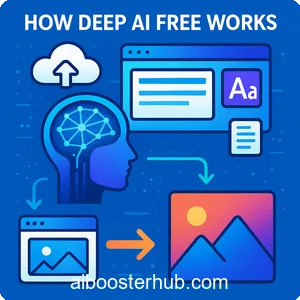
Deep AI Free operates on a cloud-based system, leveraging advanced machine learning models to deliver its services. Users access the platform through a web browser, select their desired tool (e.g., image generation or text creation), and input their prompts or files. The AI processes these inputs and generates outputs based on its trained algorithms.
Ease of use
The platform’s intuitive design ensures that users can start creating with minimal setup. No software installation is required, and the interface guides users through the process with clear instructions. For example, to generate an image, users simply type a description, adjust basic settings, and receive a result within seconds.
Technology behind Deep AI Free
Deep AI Free relies on generative AI models, such as GANs (Generative Adversarial Networks) for image creation and transformer-based models for text generation. These models are trained on vast datasets, enabling them to produce coherent and contextually relevant outputs. While the free version uses simplified versions of these models to manage costs, the results are still impressive for non-commercial use.
Limitations of the free version
While Deep AI Free is powerful, it has constraints:
- Usage limits: Restrictions on the number of tasks or outputs per day.
- Resolution and quality: Outputs may have lower resolution or fewer customization options compared to premium tools.
- Processing speed: Free users may experience slower processing during peak times.
- Feature access: Advanced tools or APIs are often reserved for paid plans.
These limitations are common among free AI deep platforms but can impact users with high demands.
3. Benefits of using Deep AI Free
Deep AI Free stands out for its accessibility and versatility, offering several advantages for users exploring generative AI free tools.
Cost-effective exploration
The most significant benefit is the zero-cost access, allowing users to test AI capabilities without financial risk. This is particularly valuable for beginners or those unsure about investing in premium tools.
Diverse applications
From creating digital art to generating blog post ideas, Deep AI Free supports a wide range of use cases. Its tools are applicable in creative, educational, and professional contexts, making it a versatile choice.
No technical expertise required
The platform’s straightforward interface eliminates the need for coding or AI expertise. Users can focus on their creative or project goals without worrying about complex configurations.
Community and inspiration
Deep AI Free fosters a community of creators who share their outputs and ideas. This can inspire users to experiment with new applications and learn from others’ experiences.
4. Comparing Deep AI Free with other generative AI free tools
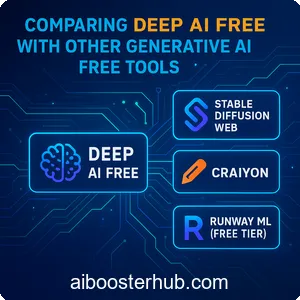
The market for free AI deep tools is competitive, with several platforms offering similar capabilities. Below, we compare Deep AI Free with other popular generative AI free tools to help you choose the best option.
Stable Diffusion Web
Stable Diffusion Web is another free platform for generating images from text prompts. It’s open-source, which gives it an edge for developers who want to customize the tool. However, it requires more technical know-how compared to Deep AI Free’s plug-and-play approach.
- Pros: Open-source, highly customizable, supports high-quality image generation.
- Cons: Steeper learning curve, less intuitive for non-technical users.
Craiyon
Craiyon (formerly DALL-E Mini) is a free text-to-image generator known for its quirky and creative outputs. It’s simple to use but often produces less polished results than Deep AI Free.
- Pros: Easy to use, fast results, fun for casual users.
- Cons: Lower image quality, limited customization options.
Runway ML (Free Tier)
Runway ML offers a free tier with tools for image and video editing, as well as text-to-image generation. It’s more feature-rich than Deep AI Free but imposes stricter usage limits in its free plan.
- Pros: Advanced editing tools, supports video and image processing.
- Cons: Limited free usage, complex for beginners.
Deep AI Free strikes a balance between ease of use and functionality, making it a great starting point for most users. However, those needing specialized features may prefer alternatives like Stable Diffusion for customization or Runway ML for advanced editing.
5. Use cases for Deep AI Free
Deep AI Free’s versatility makes it suitable for a variety of applications. Below are some practical use cases to inspire users.
Content creation
Bloggers and marketers can use Deep AI Free to generate visuals for posts or draft text for social media campaigns. The text-to-image tool is particularly useful for creating unique thumbnails or promotional graphics.
Art and design
Artists can experiment with AI-generated artwork, using Deep AI Free to create base images that can be refined manually. The platform’s ability to generate diverse styles, from abstract to realistic, appeals to creative minds.
Education and research
Students and educators can use Deep AI Free to explore AI concepts, create visual aids for presentations, or generate text summaries for study materials. It’s a practical tool for hands-on learning.
Prototyping and testing
Developers can test AI-driven features for apps or websites using Deep AI Free’s outputs. While the free version isn’t suited for production-level tasks, it’s ideal for prototyping ideas.
6. Tips for maximizing Deep AI Free
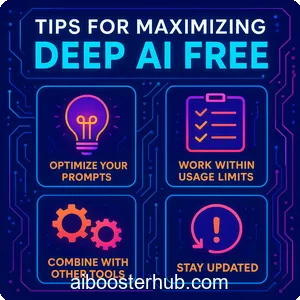
To get the most out of Deep AI Free, consider the following strategies:
Optimize your prompts
Clear, detailed prompts yield better results. For image generation, include specific details like style, colors, and composition (e.g., “a vibrant sunset over a futuristic city, cyberpunk style”). For text, specify tone and purpose (e.g., “a professional email summary”).
Work within usage limits
To avoid hitting daily limits, prioritize tasks and save outputs locally. Plan your usage to focus on high-priority projects, especially during peak platform hours.
Combine with other tools
Pair Deep AI Free with free editing software like GIMP or Canva to refine outputs. For example, enhance AI-generated images with manual edits to achieve professional-grade results.
Stay updated
Deep AI Free occasionally updates its tools and features. Check the platform’s blog or community forums for tips and new capabilities to stay ahead of the curve.
7. Conclusion
Deep AI Free is a powerful entry point into the world of generative AI free tools, offering an accessible and versatile platform for creators, students, and professionals. Its image and text generation capabilities, combined with an intuitive interface, make it a top choice for those exploring free AI deep solutions. While it has limitations, such as usage caps and restricted advanced features, it remains a valuable tool for experimentation and small-scale projects.
For users seeking alternatives, platforms like Stable Diffusion Web, Craiyon, and Runway ML offer compelling options with their own strengths. By understanding your needs and experimenting with these tools, you can unlock the full potential of generative AI without breaking the bank. Whether you’re creating art, prototyping ideas, or enhancing content, Deep AI Free and its competitors provide a wealth of opportunities to harness the power of AI.



